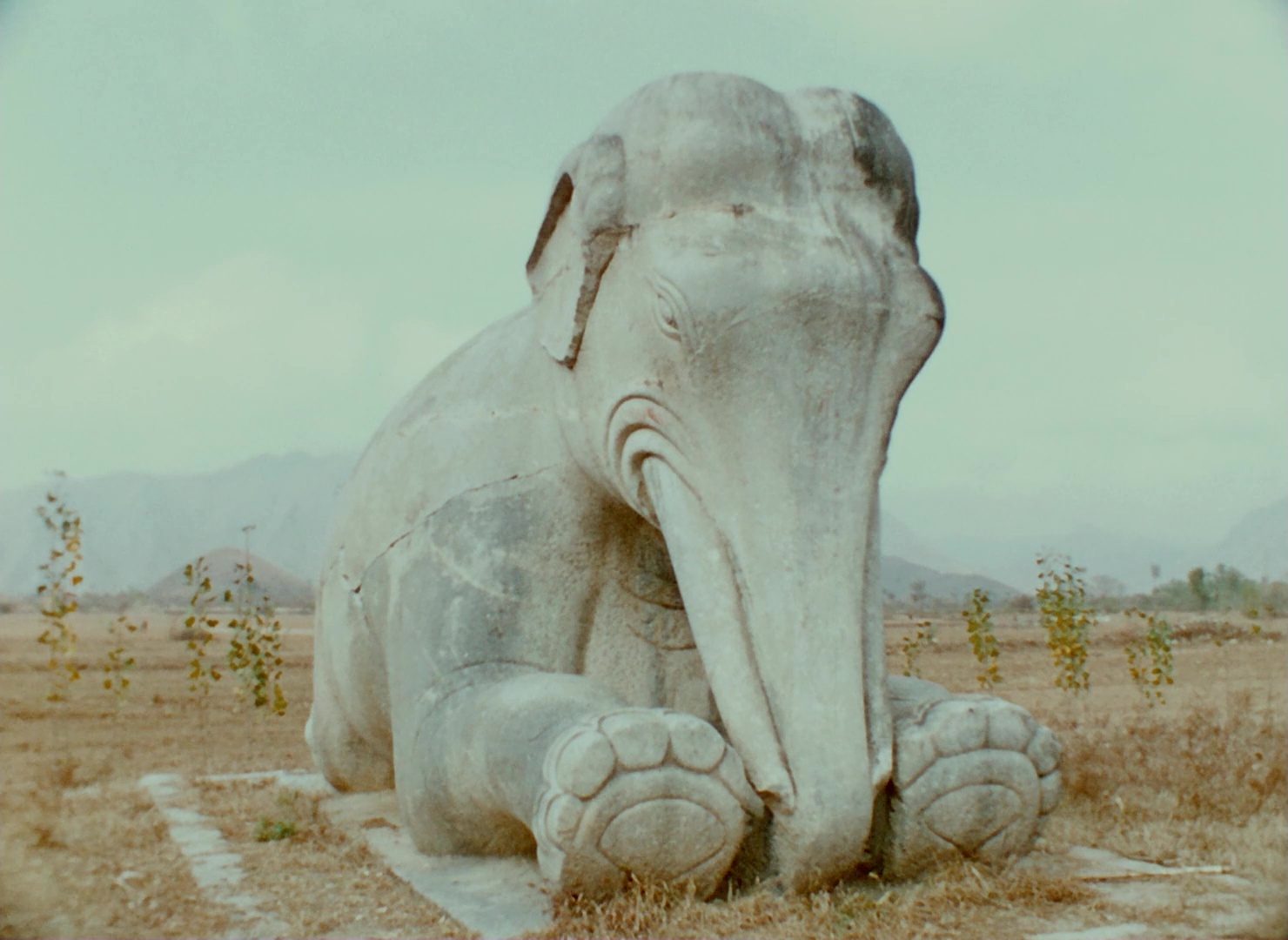Voice-Overs on TV: Let the Animals Talk

Animal life is an inexhaustible subject and an infinite source for TV programs. [Producer] Frédéric Rossif has proved this with his makeshift methods. So we turn with interest to his new venture, Caméra en Afrique, which pleasantly, instructively, and in tune with the summer season, will fill up some of your vacation, a quarter hour at a time. Those responsible for the programs, M. A. Denis and his wife, already have a number of hunting films to their credit, the best known of which is François le Rhinocéros. I can’t tell the extent to which that little film was shot for TV or if it is only a montage assembled for the small screen. The large number of close-ups seems to indicate, in any case, a concern to satisfy the perspective of TV.
It’s not in fact the images I want to critique but once again the commentary. I have too often protested on these pages against the way that Claude Darget expounds on La vie des animaux [The life of animals] not to render him indirect homage, this time at the expense of Stéphane Pizella. Indeed I don’t think the latter has found a tone that’s any more suitable. His commentary may be relatively discreet, descriptive, and vaguely explanatory, but most often I find it useless. Occasionally he verges on nonsense, when, for example, he marvels that little crocodiles aren’t afraid of the water or that Mme. Denis might be kind enough to set them free (instead of killing them with her stick, I suppose).
You could say that I am making too much of a quite secondary aspect of a program whose worth lies in its images. Perhaps I am particularly sensitive to the subject of animals, but really it is the general issue of commentary on TV that is the source of my irritation. Before the war, rare was the documentary that sported a decent commentary; the stupidity of the text and voice accompanying the making of spaghetti, let’s say, or some trip across the canyons of Colorado, contributed verve, like cabaret numbers. Over the last dozen years, it must be said, things have changed, and today one can watch documentaries whose soundtracks carry not a single word. Or others, like Dimanche à Pékin, where the text is just as important as the image, with which it engages in a rigorous and vital dialogue.1 In any case, cinema is finally done with the tepid water coming from the tap of some garrulous and arrogant speaker who multiplies the pleonasms between screen and commentary. Are we going to see those faults that have finally been purged from cinema find refuge in TV, while the latter, evidently ignorant of the experience of its older sibling, falls prey to the same errors?
Improvisation: is it inevitable?
Surely the problems of commentary on TV are quite different from those that present themselves in cinema, but for reasons that are mainly contingent. A film commentary can be just as carefully developed as the montage of its images. It is the product of a writer who meditates and takes his time. On the other hand, the regime of TV makes improvisation nearly always the rule. Indeed, we might wonder to what extent this results from complacency, or whether it might not be possible to devote more time to readying programs for broadcast. Here, it’s the working methods that are up for debate.
But whether improvised, semi-improvised, or carefully rehearsed, TV commentary should respond to certain requirements. Commentaries that accompany films of a documentary nature ought to be inspired by the restraint that has been adopted by cinema. They should also be competent and effective, for example, providing the names of the animals instead of going on ecstatically about their fur or their speed, which everyone can see. But overall I confess I prefer the insolent ignorance of Claude Darget, who narrates La vie des animaux like a wrestling match, to the basic science of Stéphane Pizella, who teaches us nothing we didn’t already know.
A certain redundancy, at most, is admissible, to the extent that TV, not having the visual clarity of cinema, can sometimes make us grateful that the narrator helps us perceive what we are looking at. From this perspective, an ideal commentary is of the sort that usually accompanies films in the series Magazine des explorateurs [Explorers’ magazine]. The verve and the casual improvisation in this show never exclude precision, competence, and utility. It is true that in this case the narrator is also the auteur of the film, but this exceptional conjunction indicates nonetheless the ideal toward which TV narration should be heading.
- 1Dimanche à Pékin [Sunday in Peking] was directed by Chris Marker. Bazin reviewed it very favorably in France-Observateur, 6 December 1956, and again on 27 June 1957. The second article was published on Sabzian on 28 July 2021.
Image from Dimanche à Pekin (Chris Marker, 1956)
This text was originally published as ‘La Parole est aux animaux: Reflexions sur le commentaire à la T.V.’ in Radio-Cinéma-Télévision, 392 (21 July 1957) and more recently in Hervé Joubert-Laurencin, ed., André Bazin. Écrits complets (Paris: Éditions Macula, 2018). The English translation first appeared in Dudley Andrew, ed., Andre Bazin's New Media (Oakland: University of California Press, 2014).
Many thanks to Dudley Andrew.
© University of California Press, 2014

